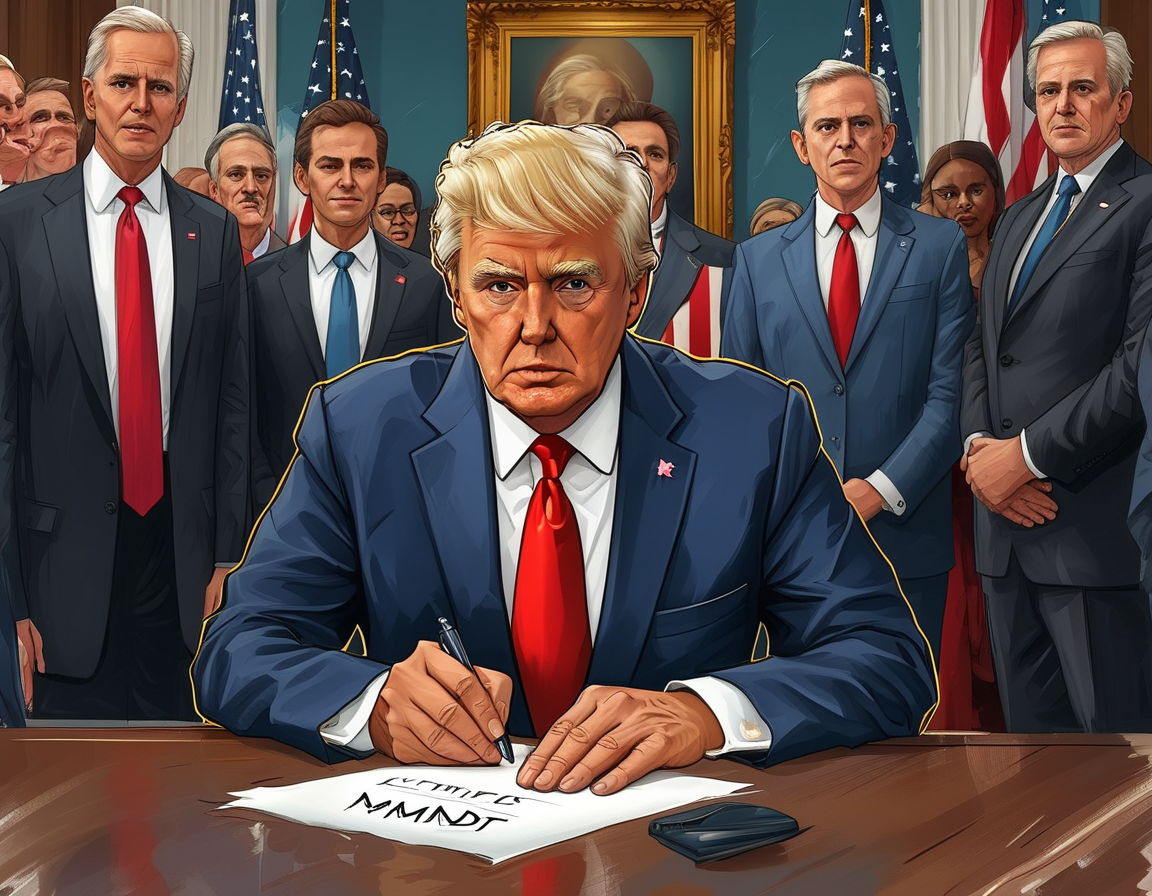
On March 25, 2025, President Donald Trump signed an executive order aimed at fundamentally altering the U.S. electoral landscape. This sweeping initiative has stirred a storm of debate, raising both hope and concern among Americans. Trump’s order is a significant marker of his administration’s objectives, particularly following his second inauguration.
The heart of the new executive order focuses on stricter voter registration rules across all states. Voters will now need to provide proof of U.S. citizenship when they fill out election forms. It sounds straightforward, right? However, many are questioning the implications of such a requirement. Could this measure unintentionally disenfranchise eligible voters?
Alongside the voter registration rules, the order calls for enhanced auditing of voter rolls. The goal is to remove ineligible individuals from the lists. Critics argue that such practices often disproportionately affect marginalized communities. The intent may be clarity, but could it result in confusion and exclusion?
Trump argues that a transparent electoral process is vital. ‘Only true American citizens,’ he asserts, ‘should decide the nation’s future.’ This statement resonates with his supporters, reinforcing a narrative of sovereignty and national pride. But for many, it echoes sentiments of distrust, particularly among those who see this as a veiled attempt at voter suppression.
The President’s allies in Congress have rallied around this order, praising it as a necessary step to restore faith in the system after his allegations of fraud in the 2020 election. The echoes of controversy are profound. Is it truly about restoring trust, or is it a calculated move to shift the electoral playing field?
On the Democratic side, pushback has been fierce. Leaders and voting rights organizations have voiced concerns that this order is crafted to undermine the voices of specific groups. Legal immigrants and low-income communities often lean toward the Democratic Party. This executive order, they claim, is an attempt to silence those voices.
Legal experts are keeping a close watch, suggesting that this order may face significant legal challenges. After all, U.S. elections are primarily managed at the state level. Some states, particularly Democrat-led ones like California and New York, have already stated they won’t comply with the new requirements. This could lead to a complicated legal battleground that drags on for months.
Meanwhile, states with Republican leadership, such as Texas and Florida, are gearing up to implement these new rules. It’s a clear divide, showcasing how the nation’s electoral integrity is increasingly viewed through a partisan lens. What happens when state laws clash with federal directives?
Adding further complexity, not all Republican lawmakers support these changes. Some fear that stringent rules could ultimately backfire. They worry that reduced voter turnout might damage the party’s image in future elections. How can you reform a system while also ensuring it remains inclusive?
Trump’s commitment to these changes underscores a larger strategy to solidify power within his party. His administration’s approach may resonate with his base, focused on the idea that “the current system is broken.” But can he truly fix it without alienating potential voters?
As we navigate these uncertain waters, the question remains: what will the future of U.S. elections look like? Will Trump’s executive order pave the way for a more secure electoral process, or will it further complicate and fracture the democratic landscape? These pivotal moments will shape American politics for years to come.
Leave a Comment